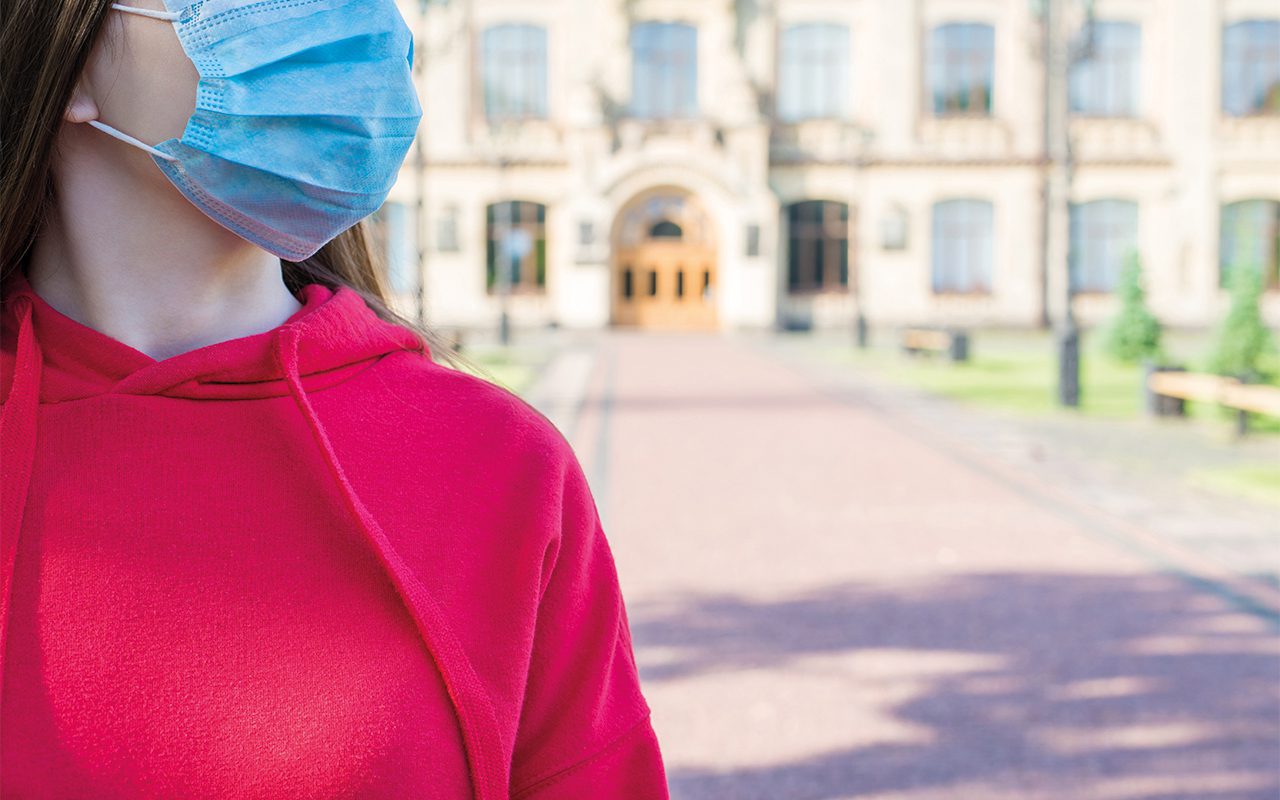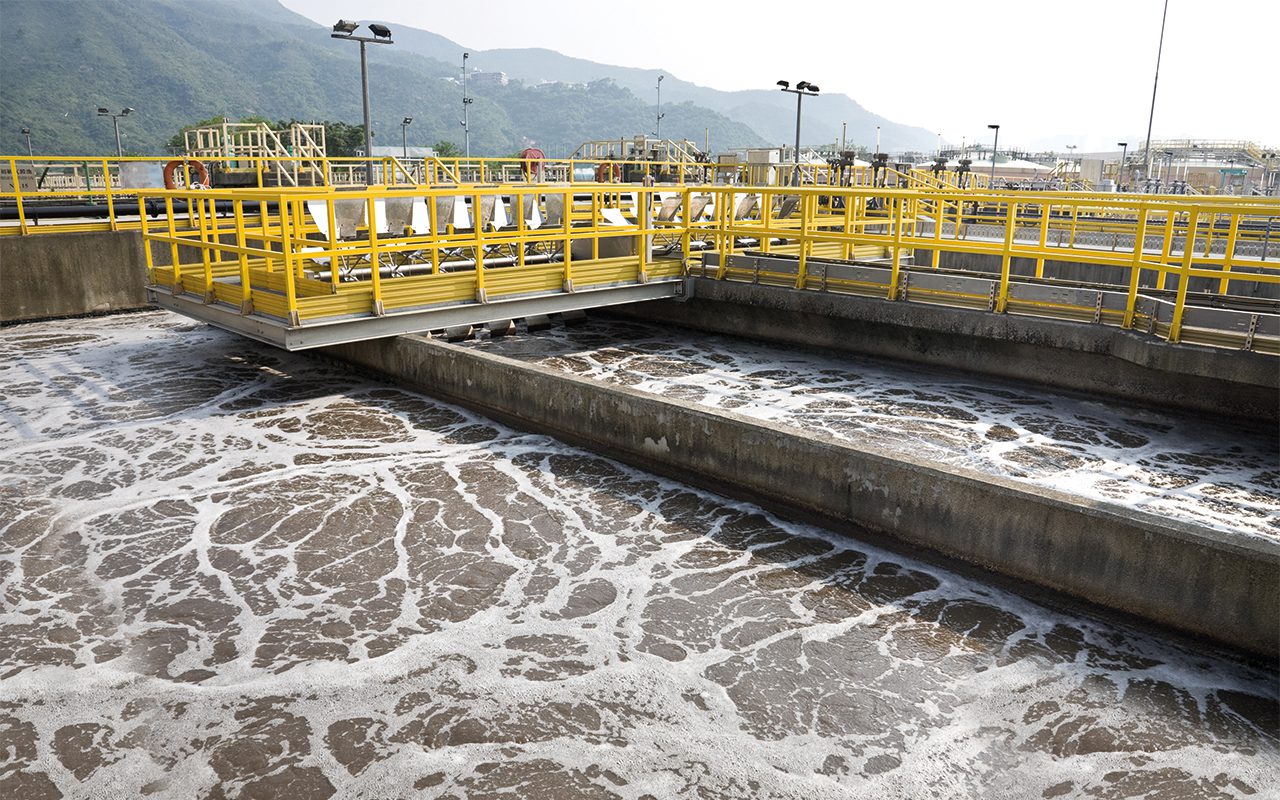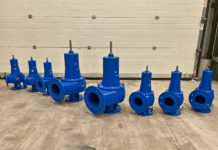Because as soon as someone gets infected with coronavirus, they start releasing or shedding it in this way. That’s why Wastewater-Based Epidemiology (WBE) seems an increasingly valuable aid to navigating a crisis like the current one. It’s an approach that can be applied to groups whose individual members might be otherwise difficult to reach via clinical testing. A panel discussion at the 2020 European Biosolids and Bioresources Conference, a virtual event hosted in November by Aqua Enviro, brought together experts with different perspectives on the topic.
It’s been a confusing year for anyone wanting to gain a clear picture of the prevalence of the virus SARS-Cov-2, and the dangers it presents.
Clinical testing, using the now familiar nasal swab PCR test, is not the easiest thing to roll out on a mass scale. And the results only provide a transient picture – someone testing negative on a Monday may well test positive on Tuesday. And that’s before we even touch on the discussion of false positives and false negatives – now seemingly a point on which members of the public have heated arguments.
A method that promises to rise above some of these difficulties is WBE. While it may seem to provide only a broad-brush identification of the prevalence of the virus in a community, it is accurate enough to detect one infection in 10k individuals, as work carried out over 20 years ago seemed to establish, when testing communities for the polio virus. So explained Dr Ian Pepper, a professor of Environmental Science at the University of Arizona, during his opening presentation. Pepper is also the director of the Water & Energy Sustainable Technology Center (WEST), a group which made headlines worldwide last summer for its success in identifying infected students at the University of Arizona.
And WBE has the advantage that “you get the whole virus load in the wastewater”, he said, deploying a term often used to designate the quantity of virus present (for example, in a person’s blood). Viral load is generally measured in wastewater samples using RT PCR tests.
WBE is also a “leading indicator” as it can detect the virus in sewage up to seven days prior to symptoms developing in members of the monitored population. This also means you can use it to detect the onset of a pandemic, said Pepper, as well as whether it is increasing, plateauing, or decreasing in a particular area. And so it can help guide decisions as to whether it is safe for a community to return to work, for example, or to ascertain the effectiveness of interventions like masks.
Student dorms: a simple target
Pepper’s group decided to get into the WBE business in March 2020, announcing an offer to test samples nationwide for a fee.
“The wastewater samples were very often positive,” he said, but “interestingly, after secondary treatment and disinfection we never got positives.” WWTPs seemed to eradicate the virus, in his analysis – an important finding, to which we will return later.
Pepper was asked to help determine whether students would be able to return for the autumn semester at his own institution. His job was to use WBE to monitor dormitories for early detection of infection among the students. His team simply located the manhole from which they could access the sewer that receives the wastewater directly from the dorm. “One of the critical decisions we made was to monitor dorms that had a single sewer,” he said, and this allowed them to test a discrete, well-defined community.
At the start of the semester, 17 August, students started moving into dorms – all of them having been tested individually and only admitted if they were negative. Classes began on 24 August, and then on 25 August Pepper’s group got their first wastewater positive result – “an exciting development”, he said, even though “we had been preparing all summer long for what we knew would happen”.
The resultant media frenzy is now a part of WBE lore, lending itself to memorable headlines (“How the University of Arizona used No2 to solve its No1 problem: The coronavirus”) and the laconic summary from Pepper that has been used as a headline to this article.
On the same day, they clinically tested all the residents of the dorm and found two who were infected (had positive PCR tests). They were asymptomatic, but were in any case removed from the dorm and put into isolation.
It may not sound like much but the application of this approach repeatedly has been credited with having kept the university open, as Pepper reported during this panel session, which took place eight weeks into the semester. At that point, the same scenario had been repeated over 80 times
Of 223 samples so far analysed, Pepper said they have had 129 negatives and 94 positives, 84 of which were followed by clinical infection, he said, “so 89% of the time, the wastewater was predicting the infections that we would subsequently find.”
The data also seems to confirm the effectiveness of measures like “shelter in place” – with wastewater viral concentrations dropping steeply as these measures were applied.
In a graph of clinical cases found in the dorms, a noticeable spike arises around 15 September – one week after Labour day celebrations. And this is another finding that has been repeated – the tendency for such public ocassions to lead to a spike in virus concentrations in the wastewater, after one week, and then a noticeable increase in infections after two weeks.
Pepper’s findings seemed to show that “false positives are rare” while false negatives can occur “if some people only have low shedding rates”, and because of factors present in samples that can cause PCR inhibition.
The sampling approach is a key decision with any WBR project, and grab sampling seemed to be sufficient in this project, with samples collected in the morning when people went to the loo.
The data collected from the dorms was also “a gold mine”, he said, and he showed how it could be used to calculate the theoretical number of infected people, using the equation: (sewage concentration x wastewater flow rate) / (amount of faeces x faecal shedding rate).
“The big unknown was the shedding rate,” he said, “but in the dorms we knew the number of people infected, because we were testing everyone in the dorm.” This allowed them to back-calculate the shedding rates, and this allowed them to plug this into the equation and use the wastewater viral concentrations to predict the theoretical number of infected people.
 Scaling up
Scaling up
From a well-defined community like a dorm, epidemiological monitoring becomes more challenging as you scale it up, and attempt to monitor neighbourhoods or cities, as another talk explained, this time by Ted Smith, an associate professor of environmental medicine at the University of Louisville school of medicine, in Kentucky.
He described a project called Co-Immunity, in his own town, one element of which is an attempt to track the movement of SARS-Cov-2 in wastewater and surface water. Two other prongs of the project involve randomised sampling of the public for active infection (using the nasal swab PCR test) and past infections (using the ELISA antibody test – “the highest end of antibody testing”).
Appropriate stratification of the community is needed to arrive at a representative estimate of infections, he said, in this case binning them according to age, race, sex and socioeconomic factors. In this way they arrived at a scheme that “gives you great predictive power on infection estimates”.
Some recent results showed 4% of the sample were carrying antibodies indicating past exposure, while only 0.7% appeared to be actively infected – consistent with what you would expect from such a randomised sample, he said.
It’s important to understand the sources of error that can arise. One key decision is the sampling method, and there are three “fundamentally different approaches”, he said, namely: grab sampling, as used in the dorm study explored by Pepper; composite sampling, whereby multiple samples are taken over a 24-hour period, a widely used approach; and sampling the primary sludge at wastewater treatment plants. The latter two present opportunities to look deeper into communities, his own group having plumped for 24-hour composite sampling.
What’s not understood at the moment, he said, is why there seems to be such a wide variation in viral loads measured by different approaches and across different sizes of groups – such as small confined settings like prisons compared to neighbourhoods and, again, compared to cities. There are also big differences between the values measured at WWTPs and those measured in sewers closer to the communities being studied. It could be to do with degradation of the material in its journey to the treatment plant. But there definitely are “statistical differences” he said, and “it’s not simple arithmetic” to extrapolate from measurements made locally to those at the WWTP.
Infrastructure is also a chalenge to accuracy. Kentucky had been especially problematic, said Smith, because there are so many rural areas where people are not contributing to a wastewater system that is easy to sample. The sewerage infrastructure in the US also varies dramatically from community to community, undermining the consistency of results.
The fate of viruses at WWTPs
Ascertaining what happens to viruses like SARS-Cov-2 at wastewater treatment plants was a mystery with which another presentation dealt. Céline Vaneeckhaute, an assistant professor in bioproducts engineering at Laval University in Quebec, explored a project looking mainly at the transition between WWTPs and water resource recovery facilities.
Recent events have heightened the vigilance from the farming community, she said, when it comes to accepting bio-solids and fertilizers with their provenance in sewage treatment. And securing a clean bill of health for such products was one of the project’s aims.
Membrane bio-reactors (MBRs) are the main focus of the study, and those which work in conjunction with digesters. She described an apparatus for simulating some of the relevant processes at laboratory scale.
The project is studying viruses like SARS-Cov-2 at different points in the process. These seemed to include the raw wastewater, the biological reactor, the membranes, the treated water (intended for reuse), the excess sludge (to be treated with a digester), and then the digestate. Samples are being taken in winter and summer, to examine the differences.
An important parameter is the Log Removal Value (LRV), she said – a measure of the ability of a treatment processes to remove pathogenic microorganisms. The goal, she said, is to track the performance of the different steps in the wastewater treatment plant and then “to try to describe kinetically” the virus and its activation throughout these treatment processes.
While the results are still to come in, Vaneeckhaute said “we do believe that standard viruses or bacteria like E.Coli can survive multiple steps” in wastewater treatment. Data from a project partner, H2O Innovation, seems to indicate that pathogens are mainly removed by the membrane step, but pathogens can still go into the sludge. One of the project’s goals is to study, “if they are removed, what do they transform into or become?”
Alluding to studies his own group had conducted on the SARS virus in 2009, Pepper said it seemed that viruses like that can survive in wastewater for 2-3 days.

Gene genie
“No-one at this point has isolated live virus from wastewater”, said Pepper, though “that doesn’t mean it’s not there”. His group was attempting to find it in the water collected from student dorms. They would have a better shot at it than most, he said, because “sewage has less chemicals, metals and organics than wastewater in a wastewater treatment plant”. The percentage recovery of viruses is around 1% with WWTPs compared to 30-40% with the student dorms, he believed.
Of course, for everyone working in this field, what is being measured at the moment is RNA rather than “viable virus”. In other words an essentially “non-transmissable” indicator of the virus. And it’s usually a specific gene that’s being measured, as Smith pointed out. Although there’s currently no standard, “there’s a lot of consensus around N1 and a little bit less on N2”.
If viruses like SARS-Cov-2 make it into WWTPs, should PPE requirements for plant workers reflect this? Pepper believed WWTP plant workers “should certainly be wearing masks”. Vaneeckhaute said she believed there could be an aerosol risk with raw sludge, but not really from bio-solids that have been treated.
Pepper said there were efforts underway to standardise on the methodology of sample preparation. Having collected samples from student dorms, his own group undertakes “myriad” forms of filtration and centrifugation in a process that can take up to 3-4 hours. Then there’s the nucleic acid extraction (another couple of hours), then RT PCR and finally Q PCR or digital droplet PCR.
As the pandemic has continued, there has been a lot of innovation here. He said he had just received a kit from a firm claiming that the sample prep and the nucleic acid extraction could be done in an hour and a half – much better than 5-6 hours. And it only costs $30, “which is excellent because it is costing us a lot more, all the disposable plastics and equipment that you use.”
The goal of this preparation stage is to concentrate the solids in a sample, so that the DNA or RNA can be more easily extracted. This is easier than trying to extract genetic material from the liquid portion of the wastewater.
Beyond PCR
The panel also discussed different testing techniques – PCR is obviously the main one in use, but alternatives from Luminultra and Oxford Nanopore are also interesting. Smith’s group had just started using mass spectrometry, which presented opportunities to look at “the broader chemistry of the sample” without being “stuck with organics”. The downside is that it’s a $60k machine with a very well paid technician running it.
“No-one at this point has isolated live virus from wastewater”
The sewer infrastructure hasn’t been designed to allow things like monitoring and instrumentation, and Smith said this was a big challenge. If we really want to reliably collect data from communities in this way, we need things like more consistent access points, and more automation-friendly environments – there needs to be a more standardised infrastructure that can support these things.
The chair of the discussion at one point wondered “what’s bigger than Covid? What next?” This seemed to elicit incredulous laughter from Vaneeckhaute, who could be heard murmuring “please”. Smith said one promising future direction was suggested by work in his own group looking at “urinary metabolites for air pollution exposure”. When you consider the cardiovascular dangers presented by VOCs, for example, the possibility of being able to reliably estimate community exposure would be “very useful” for the healthcare industry, the health insurance industry, and public policy makers. “If we move from things like pathogens and toxins to things like biomarkers of health status … it’s an extremely lucrative enterprise.”
Pepper saw promise in “shotgun viral metagenomics”, which might offer a means of “predicting pandemics before they arise”. So it’s not just about protecting the environment then, the chair concluded – the wastewater field is increasingly about protecting people.








